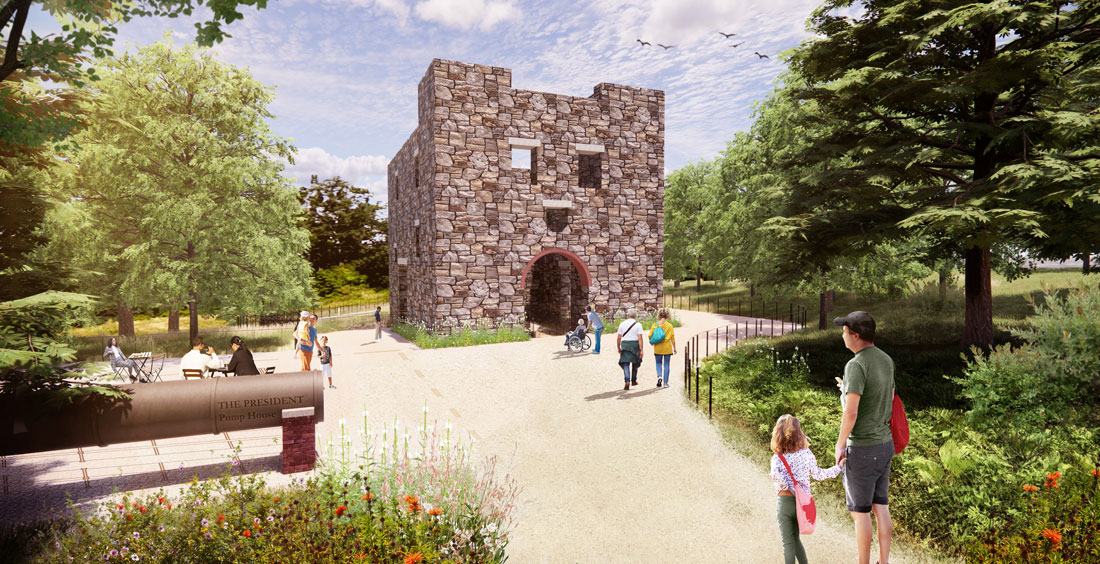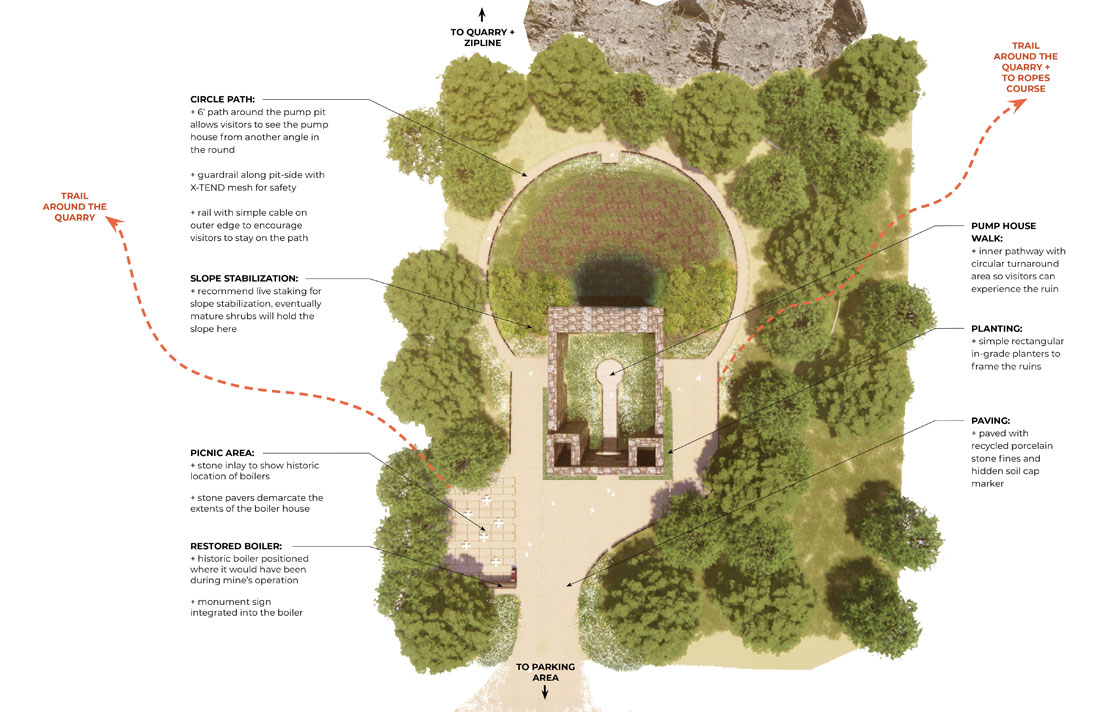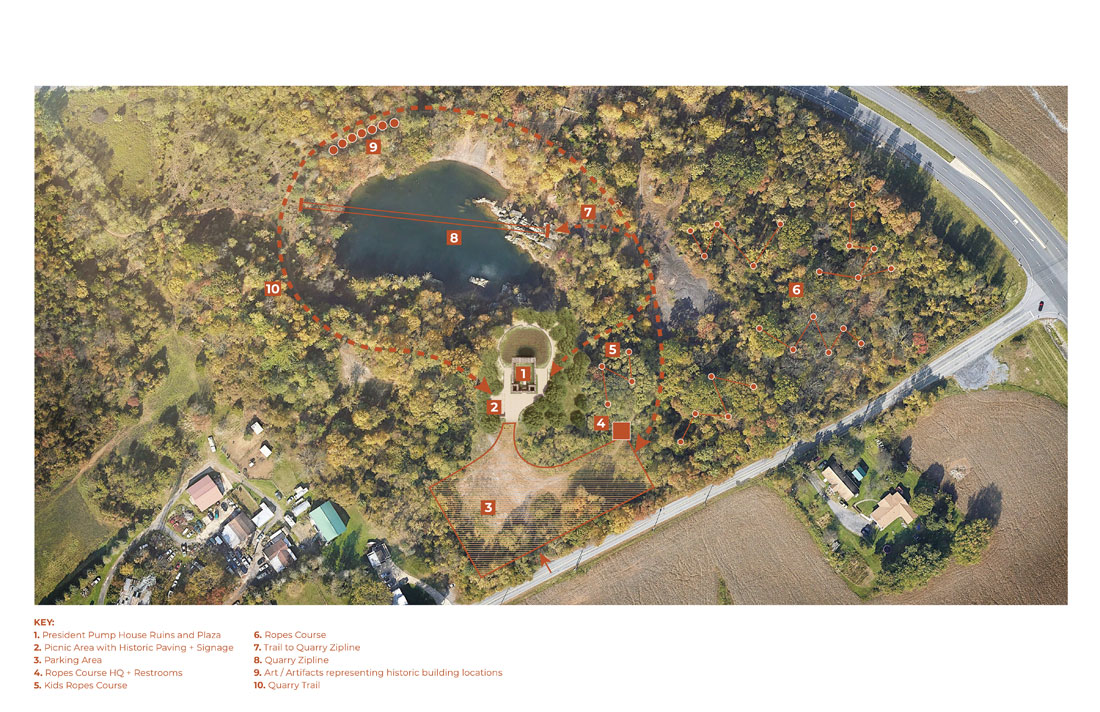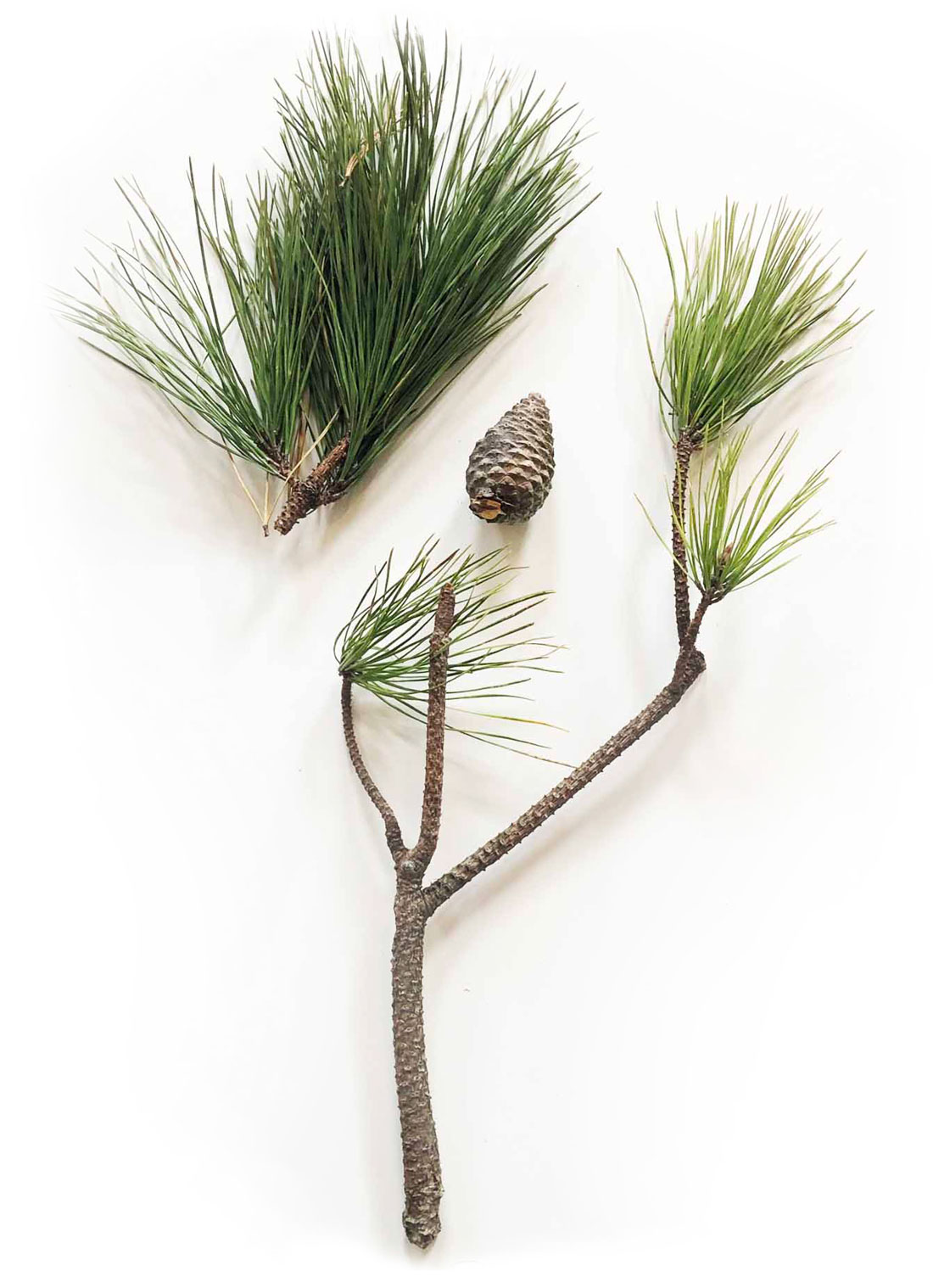Lehigh University President’s Pump
A heritage park for an industrial masterpiece
Highlighting the remnants of a post-industrial mining site, the restoration of the President Pump House creates a museum-like experience within a heritage park. The site allows visitors to encounter the artifacts and history of a once prominent fixture of the Lehigh Valley. Zinc mining and smelting took place at the Ueberroth Mine on this site from 1853-1893, coinciding with the birth of the U.S. zinc industry. It became known as the Presidents Pump House in 1872, when the Cornish Engine Pump and Boiler House were installed to extract water from the flooded mine pit. This pump was once known for being the largest single cylinder stationary steam engine in the world.
The design celebrates this important industrial ruin by creating an accessible and public space that highlights the unique cultural and ecological history through curated pathways and views, thoughtful materials, and multi-functional planting. Pathways made from crushed
recycled porcelain forms a circular trail that guides visitors in and around the pump house and pit and provides views to the zinc mine itself to the north. In the picnic area, poetic stone inlays allude to the historic locations of the boiler houses that were integral to keeping the pump in operation. Live-staked shrubs form a living slope-stabilization method for the steep “pump pit,” while more decorative planting frames the entrance to the ruins. Signage is integrated into a historic boiler, relocated from a basement in Allentown back to the position where it would have resided during the mine’s operation.






